Infrared optoelectronic using nanocrystals
The group is involved in the design of infrared optoelectronics devices using narrow band gap nanocrystals as active materials
This research topic is highly pluridisciplinar with
- Nanocrystals synthesis, including the development of new growth method.
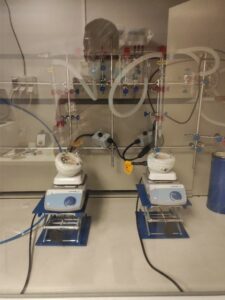
Image of nanocrystal synthetic setup
For example, we report the first highly concentrated synthesis of HgTe nanocrystals by swicthing from conventional mercury salts to liquid mercury as precursor. We thus obtained the most concentrated synthesis of HgTe nanpocrystal ever reported with concentration close to 100 g/L. This new synthetic route is promissing to achieve greener synthesis of HgTe with reduced exposure of work force to Hg precursor.

Scheme of liquid Hg based synthesis of HgTe nanocrystals
We have also been the first to report nanocrystals with THz absorption. A new synthetic procedure has enable the growth of nanocrystal with size above the Bohr radius, thus enabling absorption up to 100 µm. This work demonstrated the possibility to tune the absorption of HgTe nanocrystal all over the infrared from 1 to 100 µm

Infrared spectra of HgTe nanocrystals with various sizes
Related publications
- Tuning electronic properties of II-VI and III-V narrow band gap nanocrystals through exposure to alkali, D. Mastrippolito et al, Chem Mater 36, 11669 (2024)
- Seeded growth of HgTe nanocrystals for shape control and their use for narrow infrared electroluminescence, Y. Prado et al, Chem Mater 33, 2054 (2021)
- Near to Long Wave Infrared Mercury Chalcogenide Nanocrystals from Liquid Mercury, N. Goubet et al, J Phys Chem C 124, 8423 (2020)
- Terahertz HgTe nanocrystals: beyond confinement, N. Goubet et al, J. Am. Chem. Soc. 140, 5053 (2018).
- Electronic transport with gate, temperature and time resolved possibilities
Device performance directly relates to their transport properties. Investigation of the transport is thus a central topic in the group. We have develloped instrument to conduct measurement with Fermi level (ie with gate) and temperature with a resolution down to sub fA. We are also equipped to conduct photoconduction measurements (from UV to mid IR) with spectral and time resolved experiments. The instruments used to measured transport are not limited to nanocrystals fo HgTe and we also explore other materials such as TMDC, germanane, and other nanomaterials.
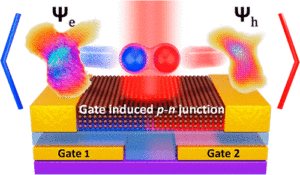
Schematic of dual gated pn junction made from nanocrystals
Related publications
- Ferroelectric Gating of Narrow Band-Gap Nanocrystal Arrays with Enhanced Light Matter Coupling, C. Gréboval, et al, ACS Phot 8, 259 (2021)
- Infrared Photoconduction at the Diffusion Length Limit in HgTe Nanocrystal Array, A. Chu, et al, Nature commun 12, 1794 (2021)
- Field effect transistor and photo transistor of narrow band gap nanocrystal arrays using ionic glasses, C. Gréboval, et al, Nano Lett 19, 3981 (2019)
- Reconfigurable 2D/0D p-n Graphene/HgTe nanocrystal heterostructure for Infrared detection, U. N. Noumbé, et al, ACS Nano 14, 4567 (2020)
- Design of the light matter coupling to achieve high absorption and spectral shaping
A central point in the design of infrared sensor using nanocrystal is the tradeoff between absorption and carrier transport. Absorption pushed toward thick film (1 µm and more) but this is incompatible with the short carrier diffusion length resulting from hopping transport. By integrating plasmonic resonator, such as guided mode resonator, we are able to focus the light on a thin slab of semiconductor and achieve absorption close to unity. This strategy can also be used to design on demand absorption spectral or to offer spectral tunability beyond the material quantum confinement.
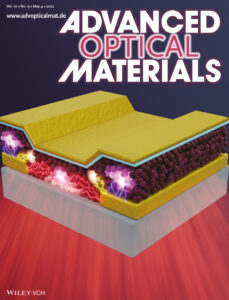
Scheme of a device coupling light resonator and nanocrystal to achieve broadband infrared sensing-Picture has been selected as cover of Advanced Optical Materials.
Related publications
- Ultrasharp, cavity enhanced, broadly tunable infrared detection using colloidal quantum dots, E. Bossavit, et al, Nano Lett 25, 9485(2025)
- Bias reconfigurable photoresponse of infrared nanocrystal film integrated into a coupled nano Fabry Perot resonator, H. Dang et al, ACS photonics (2023)
- Nanocrystal based Active Photonics Device through Spatial Design of Light-Matter Coupling, T. H. Dang, et al, ACS photonics (2022)
- Near Unity Absorption in Nanocrystal Based Short Wave infrared Photodetector using Guided Mode Resonator, A. Chu et al, ACS Photonics 6, 10, 2553-2561 (2019)
- Integration of nanocrystals for the fabrication of infrared imaging system
Nanocrystals offer great promissises as low-cost alternative to epitaxially grown infrared absorpbing semiconductor. This is especially true in the short wave infrared, where the cost of current sensor remains uncompatible with many new infrared applications such as industrial vision. In collaboration with New Imaging Technologies, we design short wave infrared focal plane array where nanocrystal are used to functionalize a CMOS read out circuit to obtain short wave infrared photoconduction.
A video highlighting the transformation of nanocrystal solution into infrared camera
Related publications
- Infrared Imaging using thermally stable HgTe/CdS nanocrystals, H. Zhang, et al, Nano Lett 24, 5039 (2024).
- Photoconductive focal plane array based on HgTe quantum dots for fast and cost-effective short-wave infrared imaging, C. Gréboval et al, Nanoscale (2022).
- Material Perspective on HgTe Nanocrystal-based Short Wave Infrared Focal Plane Arrays, H. Zhang et al, Chem Mater 34, 10964 (2022)
- HgTe Nanocrystals for SWIR Detection and their Integration up to Focal Plane Array, A. Chu et al, ACS Appl. Mater. Interfaces 11, 33116 (2019).
- Infrared light emission
The group also works on light emission in geometrical LED geometry using nanocrystals as light emitter. Our interest goes beyond just the LED performance and we integrate LED for active imaging. In the infrared, the reflexion constrast can be quite different from the visible and this can be used for moisture detection for example, see the figure below. The current trend is to control the emission through coupling of the active medium with photonic (plasmonic or dielectric) cavities. We also expand our interest toward to Hg based materials
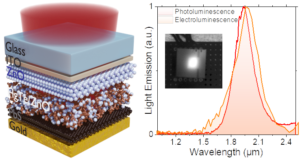
Left scheme of an infrared LED based on HgTe Nanocrystals.
Related publications
- Shaping infrared luminescence of colloidal nanocrystals using dielectric microcavity, E. Bossavit, et al, Adv Func Mater 2403532 (2024)
- Advancing coupling of III-V quantum dots to photonic structure to shape their emission diagram, E. Bossavit, et al Adv Opt Mater 12, 2401601 (2024)
- Electroluminescence from Nanocrystals above 2 µm, J. Qu et al, Nature Phot. 16, 38 (2021).
- Electroluminescence from HgTe Nanocrystals and its Use for Active Imaging, J. Qu et al, Nano Lett 20, 6185 (2020)
- A nanoplatelet-based light emitting diode and its use for all-nanocrystal LiFi-like communication, J. Qu et al, ACS Appl Mater Interfaces 12, 22058 (2020)
Devices integration necessarily requires a deep knowledge on the material electronic structure. Our main builiding block is HgTe nanocrystal which combine bulk inverted band structure with quantum confinement and surface chemistry dependence. It is thus of utmost importance to unveil band alignment of this material in absolute energy scale to be able to efficiently integrate it into devices with the right band alignment (low Schottky barrier). To reach this goal, we use a combination of infrared spectroscopy and photoemission (conducted on tempo and Antares beamline of synchrotron Soleil). The current trend is to conduct toward operando measurement and to switch from spectroscopy to advanced imaging of the energy landscape.
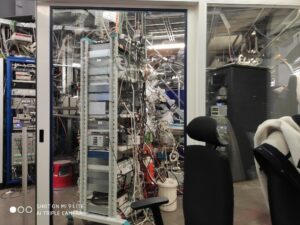
Photo of Tempo beamline at Soleil.
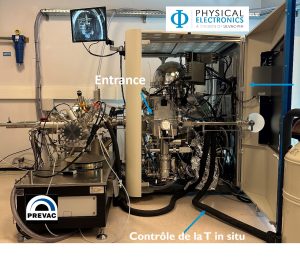
The team also just gets equipped with state of the art XPS spectrometer a Phi geneis with triple source : UV for band alignement, Al monochormatized with beam down to 5 µm and Cr for in depth analysis. The instruement is also capable of operando measurements (T, bias, light application).
We also use intensively infrared spectroscopy including under pressure at Smis Beamline of Soleil.
Related publications
- Mapping the Energy Landscape from a Nanocrystal-Based Field Effect Transistor under Operation using Nanobeam Photoemission, M. Cavallo, et al, Nano Lett 23, 1363 (2023)
- The Strong Confinement Regime in HgTe Two Dimentional Nanoplatelets, N. Moghaddam et aln J. Phys. Chem. C 124, 23460 (2020)
- Revealing the Band Structure of FAPI Quantum Dot Film and its Interfaces with Electron and Hole Transport Layer using Time Resolved Photoemission, D. Amelot et al, J Phys Chem C 124, 3873 (2020)
- Impact of dimentionality and confinement on the electronic properties of mercury chalcogenides nanocrystals, C. Greboval et al, Nanoscale 11, 3905 (2019)
Our research activities is funded by
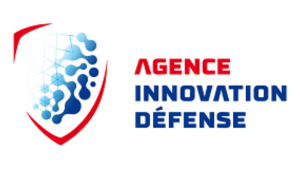
French DOD through project Dirac project
Past funding by AID through NITQuantum
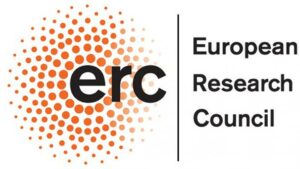
ERC through consolidator grant (AQDtive – 2024-2029))
past funding: starting grant (BlackQD – 2018-2024)
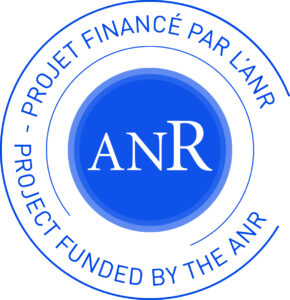
Agence nationale de la recherche through project Quicktera, Piquant, camIR, nanomirage
Past funding by Nexdot, ANR (Iper-Nano2, Copin, Frontal, Graskop, Bright, MixDFerro)
OCN Team member – OCN group life – OCN research – OCN publications

